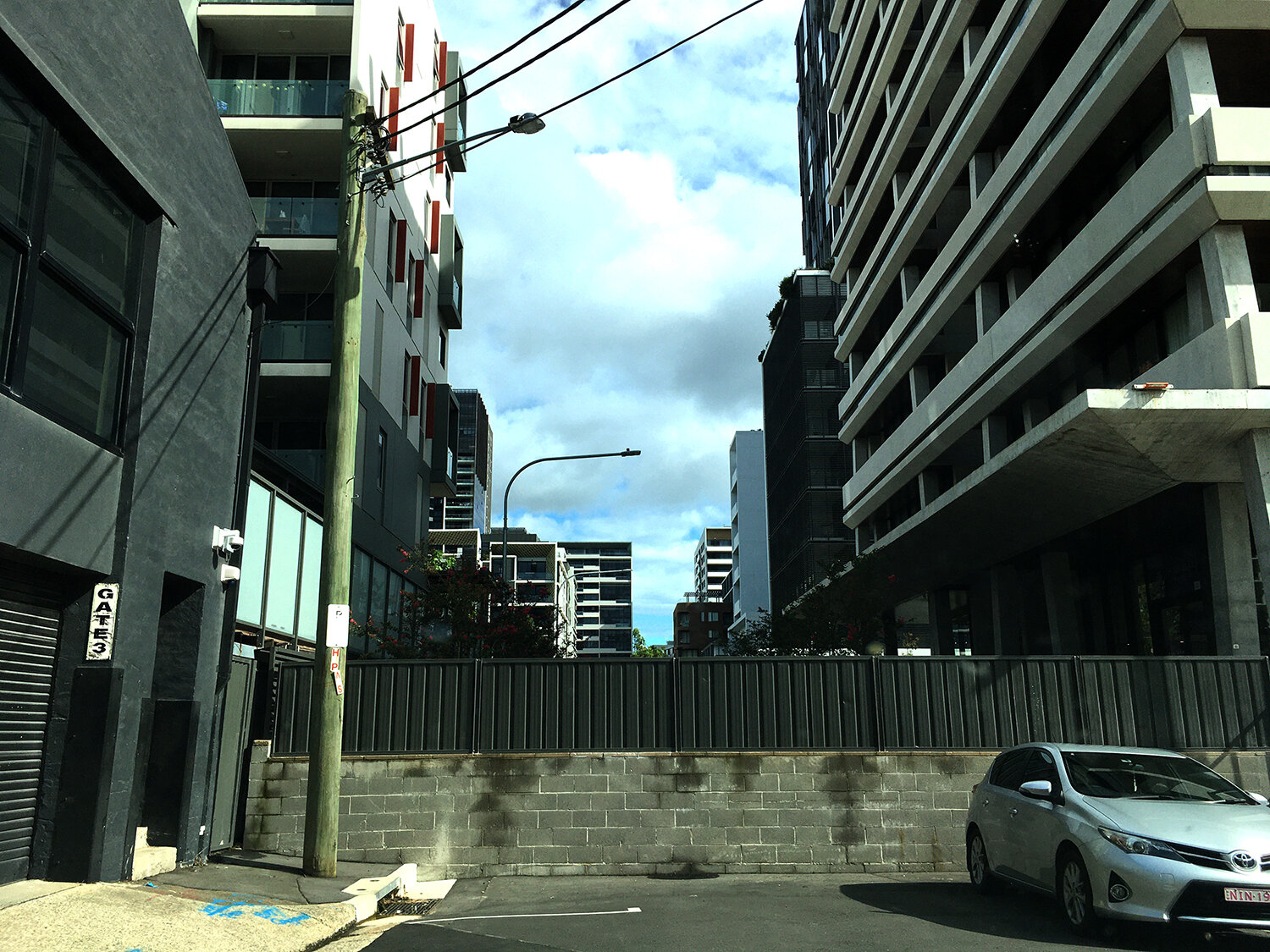Pearl Street, Newtown on Wednesday, 13 May 2020
The factory worker’s house
Pearl Street is at the other end of the new ‘Industri’ apartment complex I mentioned in my writing about Alice Street, published on 23 October 2020 with the title I wait for you here.
I was sure that a factory would have been on that site and that the name ‘Industri’ was honouring this industrial past.
Opposite this complex is a stately home on a large property with tall trees. Very unusual for this area which has mainly small terrace houses. I imagine it belonged to the owner or director of the factory that once stood at the location of the new residential block. He was of a generation and work ethic who believed to have to be present at their own business or otherwise things wouldn’t function properly. I am making this up entirely.
The factory owner’s house
I notice a variation of the peaky gable style terrace house in this street, where two entities share the same gable and have two entrances underneath, while most I have seen have a window underneath and the entrance at one side. A big fenced-in playground is closed. In a small passageway, a few young men are working on graffiti. At the end is Pearl Lane with a retro feel and look about it, enhanced by the intense light that breaks through dark clouds.
Back in Pearl Street is a large empty lot and on the exposed wall of a house at the end of it is the word CHEER in graffiti lettering. I consider briefly photographing some discarded items on the porch of a neglected small cottage, including a scarf wound around the fence post which matches the colour of the window frames. But give it up. A moment later a truck arrives and stops right there. Two delivery guys carry in a big packaged screen and something else. Someone seems to need better entertainment equipment for the lockdown, no matter how shabby all the rest looks. And I thought the house is deserted.
All you need is love

























































































































































